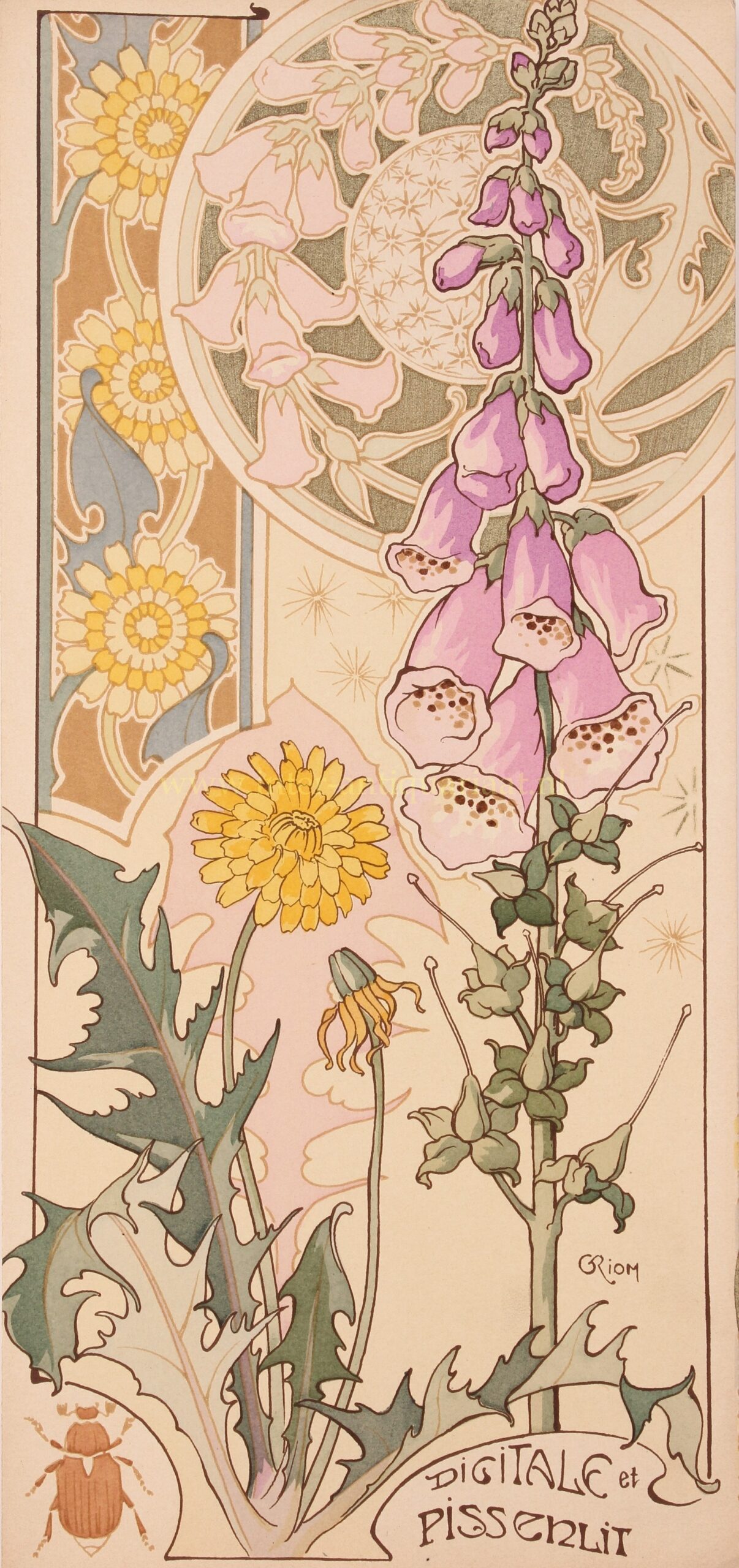“Digitale et pissenlit” [foxglove and dandelion], colour lithograph created around 1900 by Georges Riom (1877-1969). Signed in the print at the bottom. Size: approx. 39 x 18 cm.
This beautiful petite poster showcases a characteristic Art Nouveau asymmetrical composition, where nature frequently took center stage, showcasing elegantly stylized plants and flowers with elongated stems. The flowers were depicted in a style reminiscent of Japanese prints: two-dimensional and almost abstract, with a graceful composition and vibrant colours.
The renowned art dealer Siegfried Bing was a driving force behind the increase of Japanese influences in the Western art world. The prints imported by Bing found eager reception among artists searching for a new style, including Vincent van Gogh. Bing specialized in Japanese art at his Parisian gallery L’Art Nouveau, from which the movement derived its French name.
Foxglove, with its impressive flower stems and bell-shaped flowers, was often depicted as a vertical element in posters. The stylized forms were often portrayed with wavy lines and fluid movements, creating a sense of elegance and grace. The flowers could have different colours, but in this case is pink, using vibrant hues to capture attention and enchant viewers.
The yellow flowers and fluffy seed heads of the dandelion were artistically rendered, paying attention to fine details and delicate structure. These elements added a sense of lightness and playfulness to the poster. The dandelion’s fluffy seeds were sometimes used to symbolize a sense of movement and freedom.
Price: SOLD


